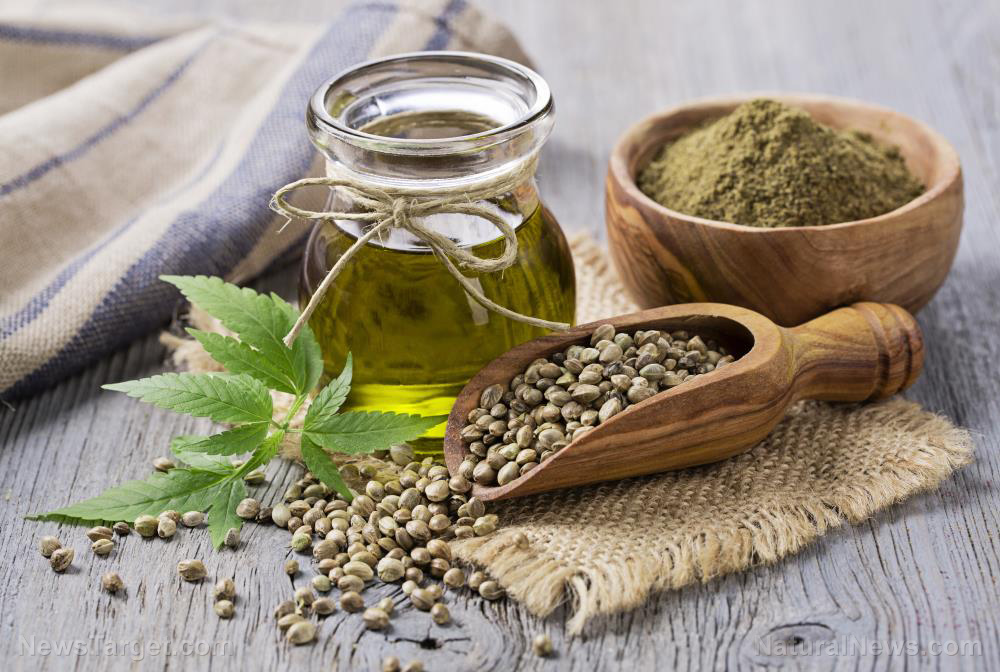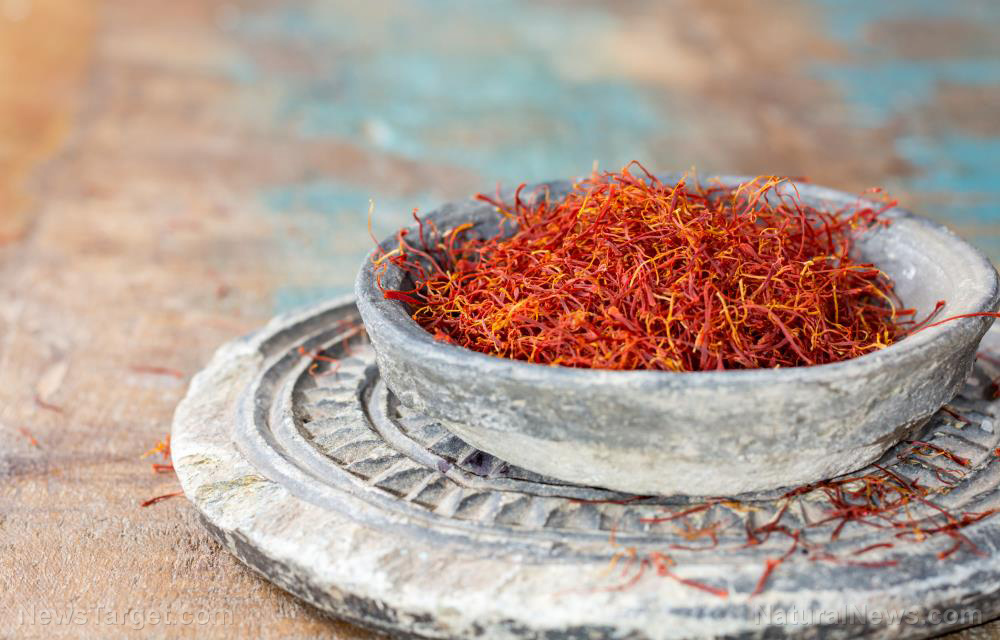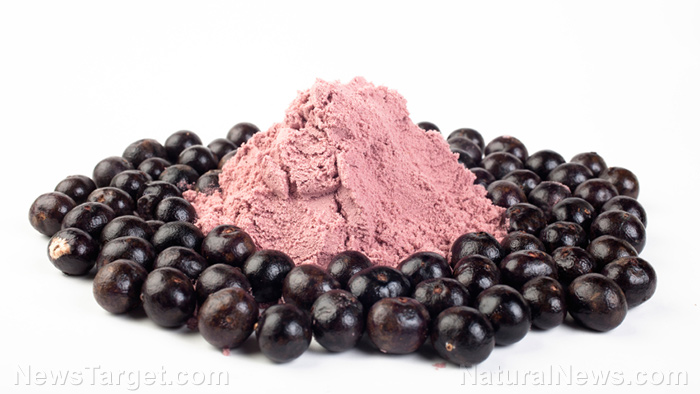Ahiflower: Unrivaled as the richest plant source of omega fatty acids
03/09/2022 / By Olivia Cook

Ahiflower is the commercial name given to the Buglossoides arvensis plant. Its name is derived from the Hawaiian word “Ahi” for yellowfin tuna, the benchmark for good sushi tuna. In the same way, it is an acknowledgment of this remarkable plant’s relationship to traditional omega fatty acid sources.
Also known as corn gromwell and stoneseed, ahiflower is a naturally wild plant recorded as far back as 1597 in Gerrard’s Herbal, growing as a small meadow/hedgerow plant or appearing as a weed in wheat and barley fields.
The plant produces small, white, five-petaled flowers. Each ahiflower bloom produces up to four seeds. These seeds are pressed to produce ahiflower oil – an omega-rich, healthy oil with a clean taste and aroma. It has a higher quantity of high-quality omegas than any other seed oil ever discovered. (Related: Ahiflower: The richest non-fish source of omega fatty acids on the planet.)
Ahiflower is one of the best sources of omega fatty acids
Marine-based sources of beneficial omega fatty acids have dominated the market due to the lack of comparable alternatives until now. The popular commercial sources of omega-3 oils are cold-water fatty fish, such as salmon, herring, white fish, sardines and anchovies.
However, pollutants in marine waters, unsustainable overfishing and increase of sea-surface temperatures acidification have drawn considerable international attention over the past several decades. These have been associated with a wide range of serious threats to food quality, human health and well-being.
According to the Annals of Global Health: “Our oceans are polluted with a complex mixture of toxic metals, plastics, manufactured chemicals, petroleum, urban and industrial wastes, pesticides, fertilizers, pharmaceutical chemicals, agricultural runoff and sewage.”
Plastic waste is rapidly increasing and polluting 80 percent or so of the world’s oceans, with an estimated 10 million metric tons of plastic waste entering the seas each year.
The February 2021 issue of the Global Environmental Health Newsletter reported that when ingested, these potent toxins that accumulate in fish and shellfish can cause neurological impairment, damage the nervous system and increase the risk of cancer, cardiovascular disease, dementia and rapid death.
Ahiflower has emerged as an excellent plant-based and non-fish alternative source of omega fatty acids for those who worry about toxic contamination in seafood or those who follow a vegan or vegetarian diet. Being plant-derived, ahiflower oil has no fishy taste, smell or after effects.
Better than any other natural plant source
Ahiflower is a rich plant-based source of the omega-3s, alpha-linolenic acid (ALA) and stearidonic acid (SDA); the omega-6s, gamma-linolenic acid (GLA) and linoleic acid (LA); and the omega-9, oleic acid (OA). You get all the health benefits of omega fatty acids in just one plant in just the right balance. Ahiflower contains a uniquely complete omega profile, including ALA and a balanced combination of SDA and GLA.
Unlike fish, flax and other natural sources, ahiflower contains biologically advanced plant omegas. According to a study published in the Journal of Nutritional Science, consumption of ahiflower seed oil is safe for adults, and two clinical trials showed that the healthy fats in ahiflower are up to four times more efficiently utilized by the human body than those in flaxseed oil.
Sustainable, reliable and cost-effective
Over the years, increased demand for omega-3 fatty acids for both human nutrition and aquaculture have contributed to the long-range decline of global fish stocks. Shifting to terrestrial plant sources of omega nutrition like ahiflower is one small way millions of people can reduce pressure on the forage of fish species that are among the primary sources of omega-3s and allow ocean species like the endangered bluefin tuna to rebound.
The ahiflower’s unique and unparalleled healthy oil profile attracted farmers in the United Kingdom to develop this wild plant as an agricultural crop, which they are now growing organically, cost-effectively and regeneratively.
Omega fatty acids in ahiflower provide different health benefits
Each type of omega fatty acids in ahiflower provides different health benefits. Among other things, the omega fatty acids in ahiflower can do the following: (Related: Ahiflower oil provides a balanced ratio of omega-3, omega-6 and omega-9 fatty acids to maintain optimal health.)
Support heart health
One of the unique things about ahiflower oil is its SDA content, which is far more efficiently converted by the body into eicosapentaenoic acid (EPA) and docosahexaenoic acid (DHA) than ALA. According to a study published in Nutrients, EPA and DHA give rise to newly discovered resolvins, which are anti-inflammatory and inflammation-resolving molecules. Resolvins could potentially be used to prevent cardiovascular disease thanks to their anti-inflammatory properties.
Support a healthy musculoskeletal system
Ahiflower contains more omega-fatty acids than any marine and plant source. In a study published in Prostaglandins, Leukotrienes, and Essential Fatty Acids, researchers discovered two novel anti-inflammatory compounds in ahiflower omega-3 oil extracted from the Buglossoides arvensis plant. Ahiflower oil’s uniquely high SDA content and anti-inflammatory properties mean less joint and muscle pain, whether caused by illness or exertion.
Support skin health
Unlike flax, ahiflower contains the omega-6 GLA, which is associated with skin health, hormonal balance and anti-inflammatory support. According to a study published in the Journal of Oleo Science, supplementation with GLA can help people with dry skin and mild atopic dermatitis.
Support sensible weight management goals
According to a review published in the journal Advances in Nutrition, diets rich in oleic acid can positively influence fat balance and body weight through the regulation of food intake, body mass and energy expenditure. Importantly, abdominal fat and central obesity can be reduced following the consumption of high OA-containing meals.
Support mental health
The omega-3s in ahiflower may have a beneficial effect on mental health. According to a study published in the journal Brain, Behavior, and Immunity, supplementation with omega-3s helps decrease anxiety symptoms even in people without anxiety disorders.
Humans need omega-fatty acids to support optimal immunity, vitality and overall wellness – you just have to decide where and how to get them. Take advantage of ahiflower oil, which provides a pure and potent source of nutrition, without the contamination or inconveniences of other popular sources of healthy fats.
More related stories:
Why it’s important to know the differences between the 3 types of omega fatty acids.
A guide to balancing our omega-3 and omega-6 fatty acid intake.
Omega-3 fatty acid linked to positive impacts in behavioral and cognitive processes.
Watch the video below for a close look at the health benefits of omega-3, -6 and -9.
This video is from the Natural News channel on Brighteon.com.
Sources include:
Submit a correction >>
Tagged Under:
ahiflower, ahiflower oil, anti-anxiety, food science, functional food, healthy fats, heart health, mental health, natural medicine, nutrients, nutrition, omega-3 fatty accids, omega-6 fatty acids, omega-9 fatty acids, skin health, slender, supplements
This article may contain statements that reflect the opinion of the author
RECENT NEWS & ARTICLES
Mental.News is a fact-based public education website published by Mental News Features, LLC.
All content copyright © 2018 by Mental News Features, LLC.
Contact Us with Tips or Corrections
All trademarks, registered trademarks and servicemarks mentioned on this site are the property of their respective owners.




















